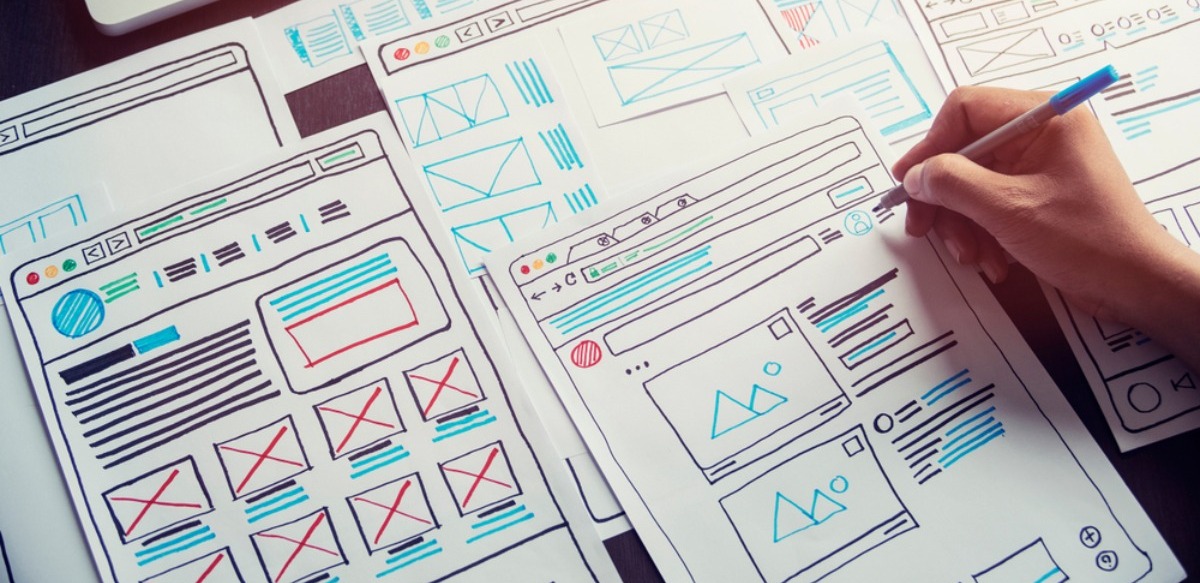User-centered design vs. human-centered design – what’s the difference?
And if there is a difference, does it matter?
In this article, we’ll learn about both concepts in detail, covering…
- The basics of human-centered design and user-centered design
- The similarities and differences between both
- Why each design approach matters
To start, let’s learn about the basics of these two design methods.
The Basics of User-Centered Design
User-centered design is a design approach that is built around users and evolved according to ongoing evaluation of those users’ needs.
Designs are built around:
- Users, user success, and the user experience
- Tasks
- Environments
Each stage of the design process incorporates user feedback, data, and input, in order to keep designs as relevant and useful as possible.
There are several phases of the user-centered design process:
- Understanding the context – who will use the product and how it will be used
- Establishing requirements – such as the criteria required for a product to succeed
- Design the solution – this process can be performed as a series of versions, or iterations
- Test and evaluate – testing, such as usability testing, can help product teams control the quality of the product
Of course, these stages are just a flexible set of principles that can be applied in different design approaches, from waterfall to agile.
The Basics of Human-Centered Design
Human-centered design is a design process that involves the human perspective at each stage of the design process.
It can be applied in a variety of disciplines and fields, such as product design and business design.
There are many benefits of this approach, which can produce products and processes that:
- Are more usable
- Deliver better product value, product experiences, and user experiences
- Produce higher quality products, processes, and outcomes
Among other things.
An approach to human-centered design, according to the design firm DC Design, includes steps such as:
- Empathizing with the end users
- Defining the problem
- Brainstorm potential solutions
- Create prototypes
- Test and refine
Clearly, human-centered design is also focused on the end user.
However, there are subtle differences between the two approaches, which we will explore next.
User-Centered Design vs. Human-Centered Design
According to proponents of human-centered design, this design approach creates products that resonate with audiences, boost engagement, and increase growth.
Likewise, those who follow user-centered design principles claim that this approach delivers designs that are more useful, relevant, profitable, and more.
Evidently, both design approaches share certain traits, such as:
- A focus on the end user
- A basis in ISO
- Outcomes and products that are more relevant and engaging
- Products that are higher quality
The underlying idea behind each approach is to design products around users, rather than requiring users to adapt to the products.
In today’s constantly changing business world, these approaches clearly carry a number of benefits.
However, there are differences between the two.
For instance:
- Each approach is based on a different underlying model and set of processes
- User-centered design focuses on individual users, which produces user-friendly designs and outcomes
- Human-centered design, however, takes “humans” as its central focus, which lends itself more to “social problem solving”
At this point, the question for most organizations should be: which design approach is better suited to our business model?
Human-Centered Design or User-Centered Design – Which Is the Right Choice for Your Business?
It is apparent that both design approaches share a number of similarities. Each approach, for instance, derives its designs from user input, producing designs and outcomes that are more relevant and useful for its users.
However, there are subtle differences that may prompt a business to choose one approach over the other.
From the research we have reviewed so far – and from the focus of many designers who choose one approach over the other – the difference appears to lie in how “socially oriented” each design approach is.
For instance, user-centered design aims at:
- Developing products and product experiences that are usable, functional, useful, and valuable
- Focus on the individual user, rather than on groups of people or on society
- Improving the user experience
However, because human-centered design focuses on “humans” – implying a focus on humanity and human groups – tends to emphasize:
- Designs that benefit humanity, society, communities, and so forth
- Social problem solving
- Socially-oriented designs and outcomes, versus designs that center around products or business goals
This is not to say that human-centered design is only useful for socially oriented businesses.
Likewise, user-centered design is not restricted from developing socially oriented projects or products.
However, the underlying emphasis of each design approach is worth considering.
Organizations that, for instance, aim at having a positive social impact may wish to use a human-centered design approach when developing their products.
Businesses who want to focus on creating great products for individual users, however, may do better with a user-centered design approach.





![18 Examples of AI in Finance [2025]](https://www.digital-adoption.com/wp-content/uploads/2025/06/18-Examples-of-AI-in-Finance-2025-300x146.jpg)
![14 Examples of AI in Manufacturing [2025]](https://www.digital-adoption.com/wp-content/uploads/2025/06/14-Examples-of-AI-in-Manufacturing-2025-300x146.jpg)
![29 Examples of AI in Education [2025]](https://www.digital-adoption.com/wp-content/uploads/2025/06/29-Examples-of-AI-in-Education-2025-300x146.jpg)
![15 Examples of AI in Retail [2025]](https://www.digital-adoption.com/wp-content/uploads/2025/06/15-Examples-of-AI-in-Retail-2025-300x146.jpg)



![18 Examples of AI in Finance [2025]](https://www.digital-adoption.com/wp-content/uploads/2025/06/18-Examples-of-AI-in-Finance-2025.jpg)
![14 Examples of AI in Manufacturing [2025]](https://www.digital-adoption.com/wp-content/uploads/2025/06/14-Examples-of-AI-in-Manufacturing-2025.jpg)